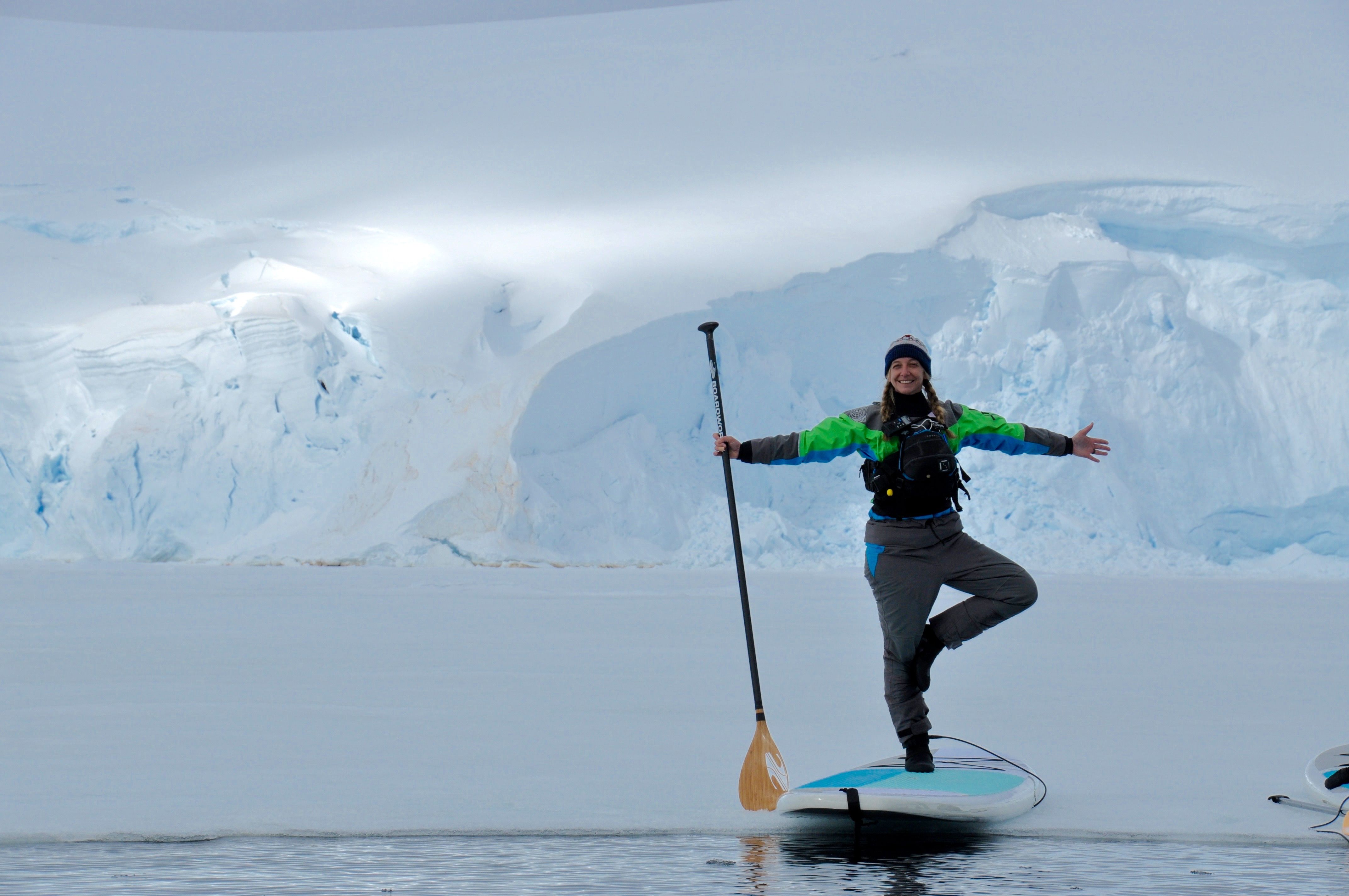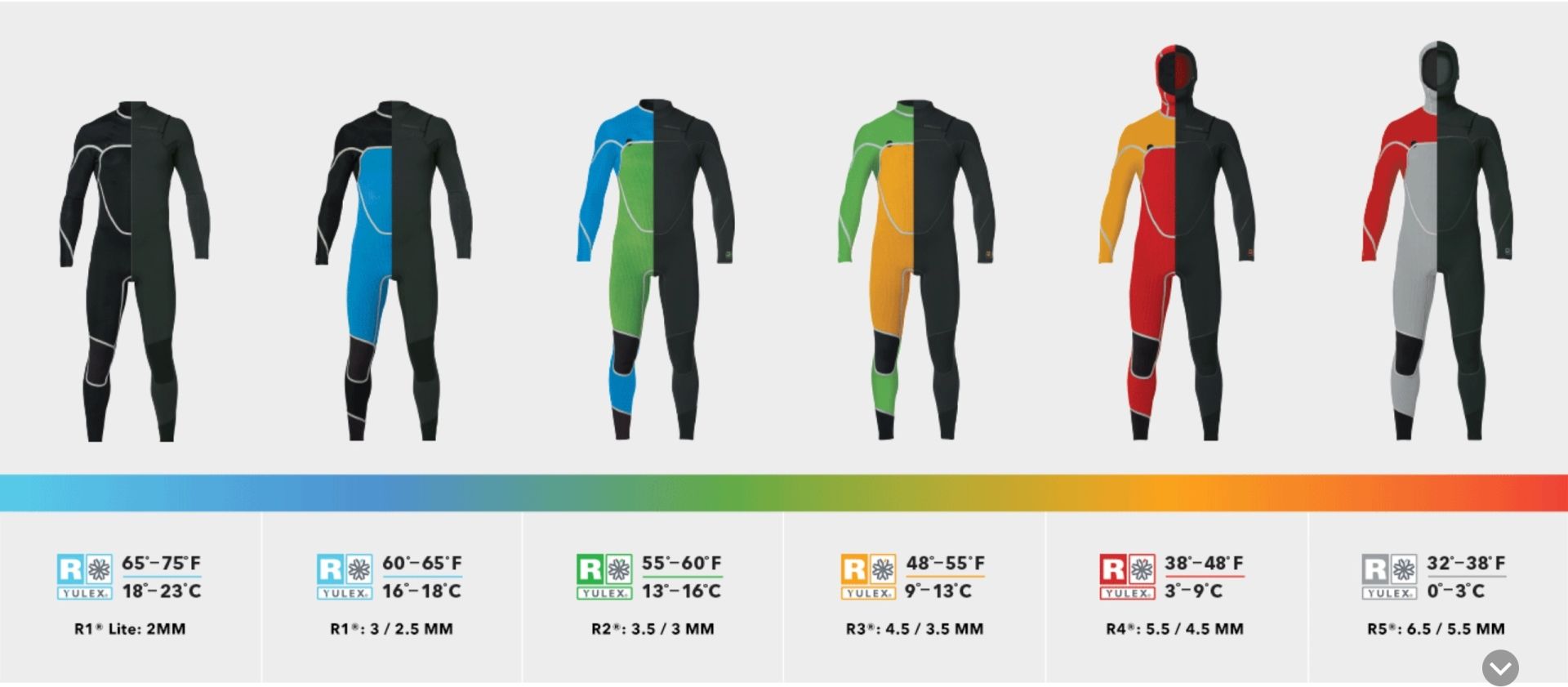Cold Weather Paddling - What you need to know to get out there, comfortably!
Most of us live in places where we don’t have endless summers. The seasons change, temperatures drop and winter sets in. This doesn’t necessarily mean you have to pack your paddling gear away until a warm spring day. Paddling in cold temps is completely doable and can even be comfortable if you have the proper equipment. Let’s look at what to wear and what some possible hazards are paddling in the winter.

Me, comfortably paddling in Antarctica! Photo by Jake Morrison
What to wear?
Wet suits and Dry suits are usually the two things that come to mind when p
eople think about dressing for cold water, so which one should you wear? To answer this question, we need to decide what type of water activity we are doing. If you are going to be in the water the majority of the time, i.e. surfing or swimming – then a wetsuit is recommended. Wet suits are designed to heat the water between the neoprene and your skin to keep you warm. For the wetsuit to really work it needs that layer of water in there to warm up. If you are paddling on a SUP, kayak, or raft, where you may take a swim here or there but will mainly be out of the water, then a dry suit is recommended. Dry suits do just that, they keep you dry. Booties, gloves, and hoods are highly advised when the water and air temps begin to drop.

Me, surfing on a chilly winter day in West Virginia Photo by Melanie Seiler
Wet Suits:
Which one to wear? Wet suits have different weights to choose from. Although it would be really handy to buy any wetsuit and wear it at all temperatures, that’s just not the way wetsuits work. You can buy wetsuits from a light rash guard to full hooded 7mm. Each wetsuit brand will give a recommended mm for different water temps. Here are two below, one from xcel wetsuits and one from Patagonia. There are usually two different numbers on the mm of the wetsuit. For instance, a 4/5mm wetsuit will be 5mm on the core of your body and 4mm on the arms and legs for flexibility. If you are going with a 5mm and above wetsuit I would recommend getting it hooded. You can always slide the hood off your head if you don’t need it, but if temps are cold enough to warrant a 5mm+ wetsuit, odds are you will want the hood too! If you go out in your warmest wet suit and still feel cold, you can wear layers under your wetsuit. Non-cotton base layers under your wetsuit may help keep you a bit warmer, however with a properly form fitting wet suit it can be a challenge to do so.

Patagonia wetsuit guide - from Patagonia's website
Booties:
No matter what weight my wetsuit is, nothing gets me out of the water before I want to than me forgetting my booties. I’ll be honest, I hate things on my feet – shoes, booties, socks… I like bare feet, but when it comes to paddling, especially in the river, I suck it up and put them on. After years of trying to push bare feet as long as possible while river surfing I have found once the water temps are around 50 and below I am much happier with booties on. Forgetting my booties don’t just give me cold feet, it gives my entire body a chill and I eventually get out of the water well before I really want to. If you are going to be in cold water go buy some booties! The wetsuit mm applies to booties as well. Instead of buying a quiver of booties I just went with 5mm and they are good for most water temps below 50degrees.
Dry Suits:
Dry suits are pricy but if you purchase a good one and take care of it properly, it should last many years as well as extend your paddling season to year round. Kokatat and Level Six both make great dry suits; I recommend going with GORE-TEX. Once you’ve invested in a dry suit and are ready to hit the cold temps, what you wear underneath is important too. Although the dry suit is designed to keep you dry you should always be prepared to get wet. Avoid cotton ie: hoodies, jeans, sweat pants – stick to materials like fleece, polyester and wool. Your dry suit is a waterproof layer but will not necessarily be warm, so wear warm insulating layers underneath. Warm socks are key too. If the temps are not too bad sneakers over your dry suit is fine, but once the temps really drop I wear booties over my dry suit. You’ll notice with heavy socks and the dry suit, your usual river footwear may not fit. I have separate dry suit shoes and booties that are a size larger to fit over the extra layers. I often wear a winter hat or neoprene hood with my dry suit to keep my head and ears toasty warm.
Hazards of winter paddling
Cold shock response:
Falling into cold water can cause your body to have some serious reactions. Sometimes it can cause you to have involuntary gasps, causing you in inhale water. I highly recommend reading this detailed article by kayak session about cold shock response: Click here for article
Dressing properly can decrease the risk of cold shock response. Never go out on the water in the winter time with the thought of “I’m not going to get in the water today, I’ll be ok.” Always dress to swim. You never know when an incident may happen and you end up in the water. With cold water and air temps it can be difficult or impossible to self rescue; bring a buddy when you paddle (buddy system)!

My paddling buddy, Chuck, poses as we have to navigate over 1ft thick ice chunks to get onto the river.
Ice:
There are some different hazards caused by ice between small lakes and rivers. In small calm lakes if there is open water to paddle in, then go for it! Remember that ice is hard, so if you fall and hit your head on it, it’s like hitting your head on a rock. I usually have groups I take out paddle on their knees when we go through chunks of ice. Rivers are where ice can be a bit more hazardous. Ice chunks floating down the river with the current can be an issue. It can knock you off your board if it hits you or falling on it can also create some complications. Make sure you watch the river a bit and look to see if there is ice flowing down. The other big hazard is when there is ice attached to the sides of the banks and stretching out over parts of the river. Normally there is an open waterway in the center of the river with ice along the side; this ice along the side can create big ice undercuts. The current is flowing downstream and possibly underneath the ice. If you were to fall in while walking across the ice or while paddling, the force of the current could trap you underneath the ice. There can also be river wide ice jams that blocks your passage through that portion of the river, making a portage necessary. It’s a good idea to scout a river well if there is any ice on it before you attempt to get out. As always use the buddy system.
Driving to the put in:
If you are properly prepared for winter paddling then driving to the put in is probably the biggest hazard! 4-wheel drive recommended for those back river roads.
This looks like a good day to go to the river, right?
The Take Home:
-Know and be aware of the hazards
-Dress properly
-Buddy System
-HAVE A BLAST PADDLING YEAR ROUND!
This article can also be found on my business's website blog at www.mtnsurfps.com ____________________________________________________________________________________
Thanks for reading, I hope you found it helpful. If you enjoyed it please upvote and resteem!

Do you ever fall in? That can't be pleasant.
Of course! That's why we wear all the good gear. A lot of the time I am actually surfing, so most of the time I am in the water. I've been surfing in 35degree weather and 34degree water and was fine in my 5mil hooded wetsuit, booties and mits. Sometimes I even get warm! With the proper gear, no unfrozen water is too cold!
I assume that's fahrenheit, cos 35C is quite balmy, but 1-2C is not. Lol, swimming in booties and mits just sounds so wrong though, but obviously I can see why it's necessary.
Yes, fahrenheit haha. It is definitely necessary to have booties and mits, they are neoprene and made for the water.
Amazing. And I thought it was time for a 3x2 because the water temp had dropped to 18 degrees 🤣🤣🤣🤣🤣 celsius!